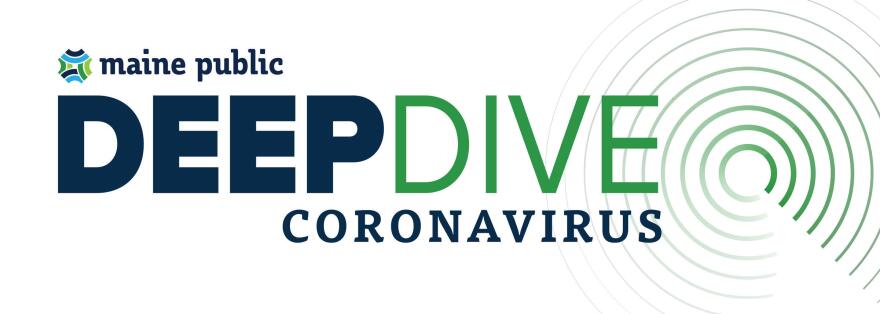Across the country, Native Americans have been hit especially hard by COVID-19. According to the U.S. CDC, they've been hospitalized about four times as often as white Americans, and died at twice the rate.
By contrast, Maine’s Penobscot Nation has seen only about 50 cases. It now expects to open vaccinations to all members 18 and older next week.

As part of our Deep Dive on the anniversary of the pandemic, I spoke with Candy Henderly — the Penobscot Nation's health director — about how the numbers have been kept so low:
Henderly: We acted early, and we acted very conservatively. So whatever guidelines were coming through, we really took a hard look and said, 'Is this the best fit for the community? And does this protect the elders most effectively?' And we tended to err on the side of caution. Especially given that so many people here are vulnerable. Native Americans are disproportionately impacted. They have a much higher level of comorbidities — diabetes and other high risk factors. So whatever the guidelines were, we just took it just a little bit further to be more diligent in our efforts.
Feinberg: So, take me through how that strategy has played when it comes to vaccination. I know the tribe has taken a different approach than the strictly age-based strategy from the state. How was that created?
So the CDC's guidance was actually a pretty good starting place to develop the vaccine plan. But what we really did is, we took it, and we took it apart. And looked at it and said, 'Each of these parts, does this really fit the community? What would we change about it? Do we agree with this assessment of the priorities?' So that's where we started, was with the CDC plan.
Then obviously, essential workers was a pretty easy decision to make, to go first. Just because we, ourselves, don't want to be vectors for spreading the disease. Then, from there, obviously, the next priority level was those elders, that the community was concerned about. So we vaccinated the elders. And from there, we moved on to people with high risk conditions — three or more, two or more, one or more. Because that is one of the reasons why the community is so vulnerable, is because of those high-risk medical conditions. So that's where we went next.
And at this point, we're finishing up some of the tribal employees, day care workers, teachers, essential workers. But it looks like, probably here shortly, we'll be opening to 18 and older.
One thing that stood out to me about the tribe's plan, as well, is that it actually prioritizes people living in transient situations, like those experiencing homelessness. Why were those populations included?
As part of our services at the health department, we have people in medication-assisted treatment, for substance use disorder. Which, again, disproportionately affects Native Americans. And people in recovery, or people who are not yet ready to enter recovery, sometimes struggle with transient housing. So we do have some community members who arrive in homeless shelters, or arrive in transient housing situations, or couch surfing, for lack of a better term, in order to have shelter. And we've run into people who needed to quarantine, but didn't have a stable housing situation. So the tribe actually set aside housing units for people who needed to quarantine, who didn't have a safe way to do that.
We identified that those people were vulnerable, in a way that we hadn't previously considered. Because of their housing situation, they were high-risk. So it was a social need, instead of a medical condition, that made them high risk. And that's why we included them in a higher priority level for the distribution.
So overall, how has the vaccine rollout gone so far?
It's actually going really well. Some sites have been using mass distribution events. I think a couple of the other tribal sites are using those events. And those work great, too. They can get a large number of people on a specific day, and just keep people rolling through to get vaccinated.
We took a different approach. We actually are doing daily clinics, with a smaller volume. One of the things I like about the daily scheduling is that it's been more flexible — in terms of getting people in, transportation issues. Obviously there are concerns around public transportation with COVID, things like that.
I think at least 24 or 25% of the population has gotten at least one shot. And I think around 17% have been fully vaccinated. So we're a wee bit ahead of the state of Maine.
So seeing how this has gone, what do you think things look like for the tribe over the next few months, in terms of potentially getting closer to normal?
Since the beginning, the tribe has really taken a public health-driven approach, in terms of its shutdown and its services. They've made a monumental commitment to their employees and to the tribal community that they're not going to take unnecessary risks with their elders, with the community's health, with people's livelihoods.
I do see us heading in the reopening direction. I think the vaccine is going to make a huge effort. So I think we're headed in that direction. But we're probably going to end up moving a little slower than the rest of the state. Just for the same reason that we've been more conservative all along. Which is, that this is a very vulnerable population. And the tribe is absolutely committed to not losing anyone to this pandemic.
For more stories in Deep Dive: Coronavirus, visit mainepublic.org/coronavirus.




